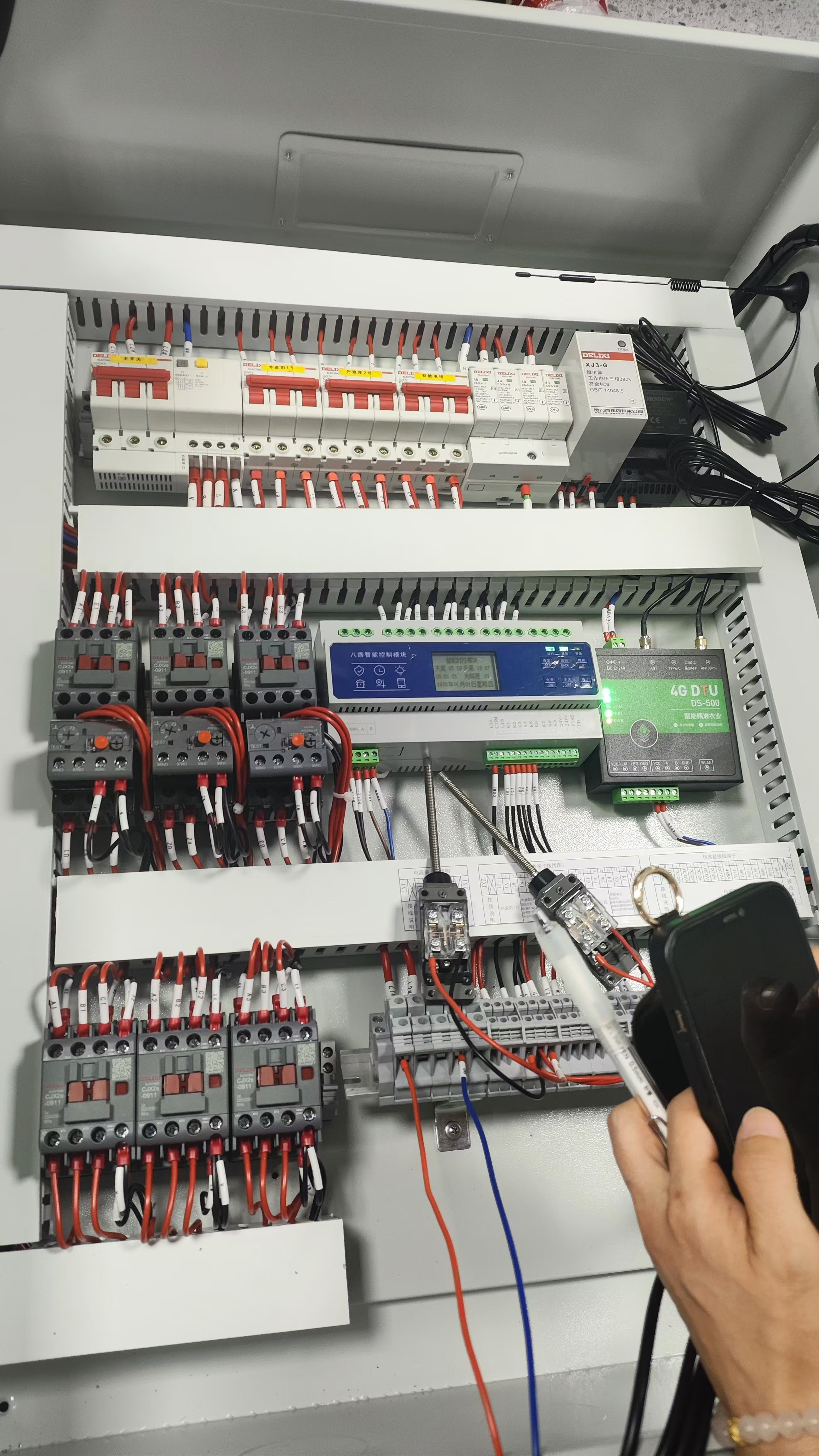Views: 0 Author: Site Editor Publish Time: 2025-10-21 Origin: Site

The metal control cabinet, which is the brain and heart of your smart greenhouse control system. Knowing the basics of what's in there can save you headaches. You don't have to be an electrical expert. This guide will explain in plain English what the components do and what you should be looking out for.

1. Safety Guardian: Leakage Protection Circuitbreaker
Its Job: Your main safety switch. It prevents electric shock by protecting against overloads and short circuits. This is the main toggle switch that you will operate.
What you need to know: Don't simply flip it on again if this one trips! Check for signs of water damage or cables. Be sure that the danger has passed before you reset it.
2. Miniature circuit breakers (MCBs), the Individual Fuses
Its Job: They are separate fuses that cover different components of your system. (Sensors, Motors, Controllers). Only the breaker for that device will trip if it has a fault, keeping your entire system running.
What you need to know: The problem may be with equipment only on that circuit. It makes troubleshooting easier.
3. Surge Protective Devices (SPD) - The Lightning Guard
Its Real job: This component protects expensive electronics against voltage spikes which can be caused by power lines falling during storms. It sacrifices its own life to protect your delicate brains.
What you need to know: There is usually a small window. If the window turns from green to a red color, the device is no longer protecting you and it needs to be changed.
4. Phase-Failure-Relay: The Three Phase Watchdog
The Real Job: All your big motors, such as fans and pumps, run on three-phase electricity. The motor may burn out if one of these phases is missing. This watchdog monitors phases and cuts the power if any are missing.
What you need to know: When the entire system goes out of power, but this device displays a fault indicator light, that could be an indication of a problem in your external power supply.
5. Voltage Converter: AC/DC power supply
Its Job: This device converts 220V AC from your wall to low voltage DC power. It works just like a large phone charger. It safely powers the "brains' of the system.
What you need to know: In the event that this fails, all of your sensors will be offline and you will lose remote control. Check to see if the power indicator is on.
6. AC contactor: Heavy Duty Switch for Motors
Its Job: This heavy-duty relay physically turns on and off your large motors. It uses a brain-controlled small signal to safely handle the power required by the motors.
What you need to know: When it activates, you'll hear an audible "click". The problem may be this if your platform indicates that a motor has started but you do not hear a click or the motor does not move.
7. Thermal Overload Relay - The Motor Overheating Protection
Its Job: Motors may overheat when they are jammed or loaded. This device detects current and heat. The device will cut the power if the motor becomes too "hot" to prevent burning out.
What you need to know: There's usually a button that resets the device after it trips. Before pressing the reset button, always find the cause of overload.
8. DTU (Data transfer Unit) is the 4G modem of the System
The system's phone is Its real job. It uses a SIM (4G network), to send sensor data and receive control commands to the cloud platform.
What you need to know: This device has signal strength indicators. Check the device's light first if your platform data is not updating. This could be due to a SIM card problem or a poor signal.
9. The On-Site Commander: 8-Channel Module Control
The Real Job of: This is the local mind inside the cabinet. It receives orders from the DTU, and commands the contactors directly. It can also be used to read feedback from limit switches and other devices, ensuring motors are stopped in the correct position.
What you need to know: The status LEDs will be your best friend when troubleshooting. The LEDs show you which inputs and outputs are working, which can help you determine if it is the module or an external device such as a motor.
Daily "Walk By" Check: Develop the habit of quickly glancing at the cabinet. Check for indicator lights at the DTU or power supply. Listen for the "click" sound of the contactors as the system is operating.
Keep electronics dry and clean: Dust, moisture and humidity are enemies of electronics. Periodically, (especially in the spring and fall), turn off your electronics and remove any dust, insects, or cobwebs from their cabinet.
Know who to call: Store your supplier's support number. You can solve the problem faster if you describe your situation (e.g. "the DTU's LED is not lit" or "the output 3 LED on the control module does not light up") when you call.
Conclusion:
It's not about doing repairs yourself. Speaking the same language with your technician and system is key. You can catch minor problems before they turn into major ones. This will ensure that your investment pays off in the long run.
| Product Name |
|---|
| Intelligent Environmental System for Greenhouse |
| Hydroponic Cultivation Environment Monitoring |
| Substrate-Based Crop Cultivation and Monitoring |
| Smart Soil Monitoring Probe for PH, EC, Temperature & Moisture |
| BGT-FWS1 RS485 Leaf Wetness Sensor |
| Soil 3-in-1 Moisture Temp & EC Meter |
| BGT-SEC(Z2) Soil Temp Moisture EC Sensor |